Posted by Elena del Valle on December 17, 2010
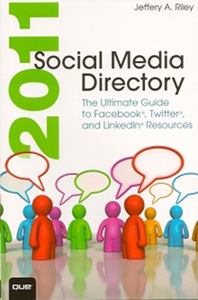
2011 Social Media Directory
Jeffery A. Riley, formerly in the publishing industry, thought it would be helpful to gather a list of companies and organizations with an online presence in the best known social media sites in a book. With that goal in mind he selected what he considers the most important companies and organizations with an online presence on the better known social media sites, Facebook, LinkedIn and Twitter in the 2011 Social Media Directory: The Ultimate Guide to Facebook, Twitter, and LinkedIn Resources (Que Publishing, $19.99). In spite of the title which may give the impression it is a list of social media the book features a list of companies and their social media addresses.
The 296-page softcover book lists 3,000 sources in 15 information categories. Fifteen chapters divided by category list subcategories each one with the name of one or more organizations or companies, a description of each along with the company website and Facebook, Twitter and LinkedIn accounts when available. The main categories are: Business, computers and electronics, current events, politics, education, news, entertainment, health, hobbies, sports, travel, religion, shopping and fashion.
Riley, president, Box Twelve Communications, Inc., a content solutions company, is a former staff writer of the Los Angeles Times. He was involved for 15 years in the information technology publishing industry as copy editor, production editor, development editor, acquisitions editor, executive editor, and author. He is the author of Introduction to OpenOffice.org, and Picture Yourself Learning Microsoft Excel 2010.

Click to buy 2011 Social Media Directory
Comments:
Filed Under: Books
Posted by Elena del Valle on December 10, 2010
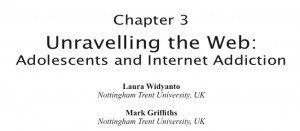
Photos: Mark Griffiths, Ph.D., Joanne Cantor, Ph.D.,
It has become common to see people at a conference presentation while at the same time checking emails or texting on their electronic assistant of choice. Multitasking has become ubiquitous with many people who rely on their technological tools and internet access for work and fun. Many drive, walk, shop, wait in line and so forth while talking or texting. Disconnecting while dining, driving, in the movies, on an airplane or at the grocery store is difficult for some. For many business owners and executives traveling with a laptop or access to the internet, even if the trip is for pleasure, is unthinkable.
Workers spend as much as 40 percent of their time online while at work on non-work related browsing, and make more than half (60 percent) of online purchases during working hours, according to a survey by the International Data Corporation (Snapshot Spy, 2008). As many as 90 per cent of employee respondents to the survey said they felt the internet can be addictive, and 41 percent said they spent more than three hours online per week for personal surfing.
While connectivity and technology provide freedom and enhanced capabilities for millions for some they are the tools or the source of addiction, according to a few expert voices softly surfacing.
Does technological abuse exist? Some believe it does. There are those who distinguish between addictions where addicts use the internet as a means for their addiction and those where the person may be addicted to the internet itself. There is more than one kind of technological or internet abuse according to Mark Griffiths, Ph.D., professor, Nottingham Trent University, in the United Kingdom. In Unraveling the Web: Adolescents and Internet Addiction, a chapter in Adolescent Online Social Communication and Behavior, a book, he and Laura Wydyanto, his co-author of the chapter, address the issue of internet addiction among teenagers.
In a 10-page article, Internet abuse and internet addiction in the workplace, published February 2010 in The Journal of Workplace Learning (Vol. 22 No. 7, 2010 pp. 463-472 qEmeraldGroupPublishingLimited 1366-5626 DOI 10.1108/13665621011071127) he identifies cybersexual internet abuse, online friendship/relationship abuse, internet activity abuse, online information abuse, and criminal internet abuse. He believes internet abuse has the potential to be a serious occupational issue although it has been neglected in research to date.

Conquer CyberOverload book cover
In the United States, Joanne Cantor, Ph.D., addresses the topic in Conquer CyberOverload Get More Done, Boost Your Creativity and Reduce Stress (CyberOutlook Press, $12.95), a 92-page softcover book published earlier this year. In 2008, she began doing research for the book and giving lectures based on her findings. In the spring of 2009, after four months of work she completed the manuscript. She said by email that she has received much positive feedback to the book and related presentations.
“I’m getting very favorable reactions to the book, with most people saying how much it relates to their own lives and how useful the tips are. They also find the brain exercises and the recent research interesting and surprising,” said Cantor by email when asked about the success of her book.
The ReStart Internet Addiction Recovery Program in Washington, in its second year of operation, is touted as the first of its kind. It offers a therapeutic retreat center stay of 45 days or longer for adults suffering from internet and video game addiction, according the the company website. An anonymous ReStart Internet Addiction Recovery Program website survey of 14,000 visitors indicates 10.6 percent of respondents acknowledged having a problem with excessive use of the internet and 39.3 percent of respondents were open to the possibility that they may have a problem. Some 27.2 percent of respondents said they suffer impairments in everyday life and interaction with others because of their internet or video game use.

Joanne Cantor, Ph.D., author, Conquer CyberOverload
As a recovering cyber-addict, Cantor believes it is possible to reach a balance between the benefits of healthy use of connectivity and cyberspace and the needs of leading a productive, creative and well rounded life. In her book, she shares strategies that have helped her overcome her former need to be connected.
The book is dived into an introduction followed by five chapters. She starts out by asking some questions to help the reader determine if he or she may suffer from cyber overload. She goes on to discuss the effects of the digital age; why she believes multitasking may be counterproductive; how too much information can decrease creativity; what she considers are the reasons behind cyber stress; and how readers may be able to control their use of technology.
Cantor, president of Your Mind on Media, is outreach director, Center for Communication Research University of Wisconsin-Madison where she was a professor for 26 years.

Click here to buy Conquer CyberOverload
Comments:
Filed Under: Books
Posted by Elena del Valle on December 3, 2010

Iron Butterflies book cover
Photos: Prometheus Books
After spending several years in eight countries and interviewing 50 dynamic women in a variety of careers and jobs Birute Regine, Ed.D., a developmental psychologist, wrote Iron Butterflies: Women Transforming Themselves and the World (Prometheus Books, $19), a book describing the leadership styles and way of thinking of the women she believes are contributing to a social transformation and empowering others.
In the first chapter Regine mentions a Mayan and Mongolian prophecy that foretells the Era of Man ends and the Era of Woman begins this year. She believes the new era will be one of cooperation driven by women’s leadership style that relies on working together for the benefit of a social group. She is convinced that the feminine qualities that for years kept women out of powerful elite circles will drive them to success in the coming years.
Her 299-page softcover book is named for a poem by the same name by Janice Mirikitani. She believes the title reflects the strength, perseverance, resilience, fragility and beauty of the many women she interviewed for the book. In spite of their diverse lives she concluded the women shared five qualities in common. They are vulnerable, revolutionary, healers, strong and welcome paradox.

Author Birute Regine, Ed.D.
She interviewed women who dedicate their time to art, poetry, yoga, healthcare, nursing, politics, customer service, choreography, diplomacy, peacemaking, designing clothes, human resources, writing, teaching, consulting, making wine, running a non profit organization, running a football team, and being a spiritual leader.
A resident of Massachusetts and New Hampshire Regine is also an executive coach, speaker and the co-author of Weaving Complexity and Business: Engaging the Soul at Work.

Click here to buy Iron Butterflies
Comments:
Filed Under: Books
Posted by Elena del Valle on November 19, 2010
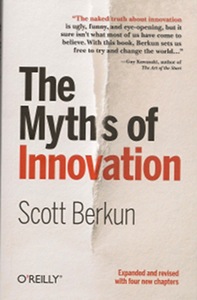
The Myths of Innovation book cover
Scott Berkun looks, with humor, at the history of ideas in the newly published paperback edition of The Myths of Innovation (O’Reilly Media, $17.99). This edition includes four new chapters on finding ideas and putting them to work, updated references, and new stories.
The author set out to share with readers his thoughts on where ideas come from, the history of history, why people don’t like ideas, how ideas thrive, how to pitch an idea and the benefits of innovation. He believes one of the secrets to discovering ideas is to work hard while making sure to include down time. Letting the mind wander frees our subconscious to be creative, Berkun says.
According to Freeman Dyson, a physicist and author Berkun quotes in his book, people who are busy all the time are not creative. At the same time Dyson says that breaks only work if they represent a change from productive work. In other words, being on a full-time vacation does not necessarily lead to creativity; although multitasking may be helpful by allowing the mind to take a break from one project while the person works on another.
“Innovation is simple if you stop thinking about it in the broken, false, but popular ways others do, and the book is a great guide,” said Berkun in a press release. “It’s been so popular because it makes the surprising truth about how great things happen fun and inspiring, as well as easy to apply at work as soon as you put the book down.”
Berkun also points out that the line between creative and insane (or eccentric) is a fine one. At the same time he believes that the moment of discovery cannot be controlled and is only one part of making an idea into a success. He argues that innovation for the sake of innovation is not always the answer in the same way that the status quo isn’t always the best solution. In an earlier chapter he proposes that while innovation itself cannot be harnessed it is possible to identify the challenges faced by innovators; he proposes eight main challenges.
Berkun is the author of Making Things Happen and Confessions of a Public Speaker. Since Aug 2010 he works for Automattic on WordPress.com. The author grew up in Queens in New York City, studied design, philosophy and computer science at Carnegie Mellon University, graduating with a B.S. in Logic and Computation. He worked at Microsoft from 1994 to 2003. His work has appeared in The Washington Post, The New York Times, Wired Magazine, Fast Company, and Forbes Magazine.
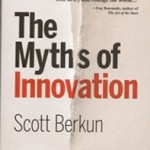
Click to buy The Myths of Innovation
Comments:
Filed Under: Books
Posted by Elena del Valle on November 12, 2010

Un Puente Al Derecho book cover
Photo: Blacker Publishing Inc.
Oregon attorney Frank de la Puente believes the people with the least economic and political power, and the most vulnerable to abuse are those who do not know their rights. To address this issue he wrote Un Puente Al Derecho, Spanish for a bridge to the law (Blacker Publishing, Inc., $24.95), a book in Spanish with information about legal issues for Hispanics, especially those who do not speak English and the undocumented. He estimates there are eight million undocumented Hispanics many of whom could benefit from the information in his book.
The 205-page softcover book is divided into four main parts: Abogados, Jueces y Cortes (lawyers, judges and courts); La Ley del Divorcio (divorce law); Bienes Raíces (real estate); and Inmigración (immigration). His goal is to provide information about what for many people is a complex topic in easy-to-read Spanish illustrated with case examples.
He includes information about the process of divorce, child custody, support, distribution of property, and the rights of unmarried and homosexual partners. The section on real estate informs the reader on the aspects of buying and selling a house, including appraising, financing, escrow and insurance. A section on immigration provides information about the legislative proposals for immigration reform, and obtaining a resident visa through a family member.
De la Puente, a trial attorney for 20 years, spent four years of night and weekend work to research the laws of states other than his home state and write the book. According to a representative from the publishing company the book is gaining momentum. In October 2010, the Library Journal Online reviewed the book which is listed as a new release on AmericaReadsSpanish.com.
Promotion of the book has been primarily by press releases and review submissions. The author, who has been a guest on Spanish language radio talk shows in Dallas and Eugene Oregon for 16 years, has made two TV appearances on Univision Television in Portland, Oregon; and appears once per month as a guest of Nelson Zepeda’s Spanish radio talk show, 1520 AM, Portland, Oregon, fielding legal questions from listeners.
De la Puente was born in Callao, Peru in 1957. When he was nine he and Ines Arimborgo Bondy, his single mother, emigrated to Los Angeles, California where he grew up. From 1969 to 1971 he served in the United States Army. During that time, he served one year in active combat as an infantryman with the First Cavalry Division in the jungles of Vietnam. After the Army and graduating with a degree in mathematics from University of California, Irvine he worked as an aerospace engineer in California for Hughes, Northrop and Rockwell. In 1990, he graduated with a law degree from Willamette University College of Law in Salem, Oregon.
He started his law career as a special prosecutor in Marion County, Oregon, before becoming a federal criminal defense attorney for 13 years. Today, he primarily practices civil litigation including contract disputes including real estate and foreclosures, federal civil forfeiture, divorce and child custody, and actions for damages arising out of personal injury.

Click to buy Un Puente Al Derecho (Spanish Edition)
Comments:
Filed Under: Books
Posted by Elena del Valle on November 5, 2010

The Wealthy Freelancer book cover
Photos: Alpha, thewealthyfreelancer.com
Freelancers or workers without long term ties to a single employer often work in journalism, book publishing, writing, editing, copy editing, proofreading, indexing, copy writing, computer programming, graphic design, web design, consulting, tour guiding, public relations and translating.
According to the Bureau of Labor Statistics, in 2005 10.3 million people in the United States (the equivalent of 7 percent of the working population) earned their living as free agents (see Wikipedia.com). For some it is a way to make ends meet in between jobs and for others it can be a liberating way to work on a regular basis.

Co-author Ed Gandia
Copywriters Steve Slaunwhite, Pete Savage and Ed Gandia believe working as freelancers is ideal as a permanent way to earn a living. So much so that they teamed up to write The Wealthy Freelancer 12 Secrets to a Great Income and an Enviable Lifestyle (Alpha, $16.95), a 274-page book about the merits of working freelance published this year. They start by explaining that being wealthy isn’t just about the money; instead it’s about “the life you build- and the kind of person you become in the process.”
They suggest readers look closely at the projects, clients, income and lifestyle that they would like to have. According to them, “A wealthy freelancer is someone who consistently gets the projects, clients, income and lifestyle he or she wants.”
The book is divided into 12 chapters, one for each secret with titles such as Master the Mental Game, Cultivate Repeat and Referral Business, Bring Focus to Your Freelance Business, and Create Alternative Streams of Income; followed by a Where Do You Go from Here? section and an appendix.


Co-authors Steve Slaunwhite and Pete Savage
In addition to being a copywriter Slaunwhite is also a marketing coach and speaker. Prior to this title he authored The Complete Idiot’s Guide to Starting a Web-Based Business and The Everything Guide to Writing Copy, and Fast Track to Great Clients. Savage, a resident of Peterborough, Canada, is a marketing consultant, speaker and coach. Gandia, a resident of Marietta, Georgia, is also a marketing consultant, speaker and coach.

Click here to buy The Wealthy Freelancer
Comments:
Filed Under: Books
Posted by Elena del Valle on October 29, 2010
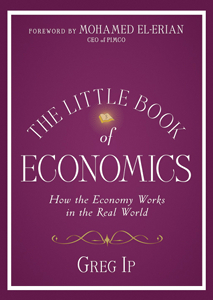
The Little Book of Economics book cover
Photos: Walek & Associates
With so much emphasis on the recession and how the economy in the United States and Europe is suffering few people, perhaps, stop to think about the basic term behind the discussion, the economy, and what it means to people’s everyday lives. Why are so many world economies struggling? How do the issues that drive our economy relate to the way we live our lives and make our living?
The answers often seem complex and out of reach of the average person. Among the many experts and lay people seeking to understand the current situation and what led to it is an editor who for years has made a living examining economic issues. Greg Ip, editor, United States Economics for The Economist magazine set an ambitious task for himself: to outline the basics of how the economy works in life in an easy to read style. In The Little Book of Economics How the Economy Works in the Real World (Wiley, $19.95) published this year he outlines his theories of how the economy works beyond academic theories.
In the 250-page hardcover book published this year, Ip covers economic terminology, myths, misinformation and its sources, inflation, globalization, the Federal Reserve, the Treasury and Congress, the roots of the current situation, government debt issues and possible consequences, sluggish growth and long term unemployment using case studies to illustrate the issues along the way. At the end of every chapter he included a Bottom Line section with a short bullet point summary of the most important points in the chapter.

Author Greg Ip
According to Ip recessions and bubbles are part of the natural cycle of a country’s economy. In the first chapter, he theorizes that if the financial system can sort out the bad debt issues resulting from the real estate bubble bursting, investment should return bringing an annual productivity growth of 1.5 percent or even 2 percent. If the labor force grows .75 percent there could be long term growth of between 2.25 percent and 2.75 percent, returning the United States to solid economic ground. In his words, the country “… may no longer be a glamorous growth stock; but it’s still a blue chip.”
The book is divided into 15 chapters: The Secrets of Success; Economic Bungee Jumping; In-Flight Monitor; Labor Pains; Fire and Ice; Drop the Puck!; All the World’s an ATM; All the President’s Men; The Buck Starts Here; White Smoke Over the Washington Mall; When the World Needs a Fireman; The Elephant in the Economy; Good Debt, Bad Debt; Love-Hate Relationship; and A Species of Neuralgia.
Ip learned about economics from his mother as a child and went on to study the subject as a university student. A former reporter at The Wall Street Journal from 1996 to 2008 he was named Business Journalist of the Year by the World Leadership Forum, received the William Brewster Styles Award in business and economics writing, and was on the 2002 The Wall Street Journal team honored with the Pulitzer Prize for breaking news reporting.
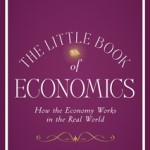
Click here to buy The Little Book of Economics
Comments:
Filed Under: Books
Posted by Elena del Valle on October 15, 2010

Unequal Fortunes book cover
Photo Arthur Levine: Emile Wamsteker
Arthur Levine has a post doctorate degree and heads the Woodrow Wilson National Fellowship Foundation. Forty years ago he grew up in the Bronx in New York City. In Unequal Fortunes Snapshots from the South Bronx (Teachers College Press, $24.95) Levine and Laura Scheiber, his research assistant, set out to look at the obstacles and opportunities for young people in tough neighborhoods like the South Bronx. In the 170-page softcover book published this summer they discuss the role of drugs, crime, violence and poor schools in the former educator’s neighborhood.
As part of the decade long project they revisited the South Bronx and compared his life in the 1960s with that of a group of Latino teenagers in the same neighborhood today. Among the questions they pondered are whether low income urban schools are as bad as some think; what life is like for disadvantaged children growing up in low income neighborhoods; and why people living on the same block 40 years apart have such unequal chances in life. The book is divided into three main sections: Arthur’s Story, Leo’s Story and What Changed?
Leonel Disla, one of the young men in the group they examined, died a violent death at the hands of the police. The authors examine what happened to the young man and explore the ways in which today’s society may have failed him. As part of their process they share information with readers about the youth’s family and friends as well as what they believe were his hopes and fears. Along the way they look at the devastating effects of poverty and racism like low-wage, dead-end jobs, inadequate housing, high crime rates, substandard schools, violence, drugs, a broken legal system, prison, and funerals of the underaged.
In Unequal Fortunes, the authors explore what they believe is the role of communities in shaping the destiny of young people and what they think could be done to ensure that more young people from low-income, high-crime communities can succeed in school, college, and life. At the same time, they struggle to explain why the lives of the two people were so dramatically different.
According to the book’s Prologue, the authors believe over time the prospect of the American Dream has diminished for many, especially the poor. They are convinced that although education is the best way out of poverty in America today youth in impoverished neighborhoods must overcome many difficult barriers on their way to reaching the American Dream.

Author Arthur Levine, Ph.D.
Levine is president emeritus of Teachers College, Columbia University. He also previously served as a faculty member and chair of the Institute for Educational Management at the Harvard Graduate School of Education (1989-1994), president of Bradford College (1982-89), and senior fellow at the Carnegie Foundation for the Advancement of Teaching and Carnegie Council on Policy Studies in Higher Education (1975-82). Scheiber is a Ph.D. candidate in Comparative and International Education at Teachers College, Columbia University

Click here to buy Unequal Fortunes
Comments:
Filed Under: Books
Posted by Elena del Valle on October 8, 2010
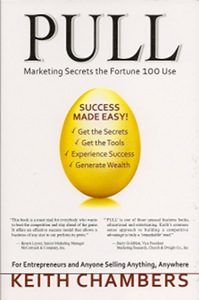
Pull: Marketing Secrets the Fortune 100 Use book cover
Marketer Keith Chambers has supported the marketing efforts of 500 companies for well known brands such as Clorox, Del Monte, Campbell’s, Coppertone, Arm & Hammer, Sparkletts, Hormel, Scotch-Brite, Claritin, the Miss America Pageant and Equal. In Pull: Marketing Secrets the Fortune 100 Use (Polimedia Publishers, $19.95), his 2009 book, Chambers promises readers big-business marketing methodology for small and medium-sized businesses.
Chambers defines Pull as a marketing force that compels people “to take anything that occurs as extraordinary and quickly make it ordinary.” He says that maintaining a strong business identity and presence are essential to success.
In the book, he shares with readers his opinion on how to best understand consumer needs, establish effective communication, and develop a successful branding and marketing strategy. He seeks to enlighten his audience by first helping them understand marketing, which he defines as the study of free enterprise; and then explaining to them how to create out-of-the-ordinary tools to deal with free enterprise.
The book, which is peppered with color photos, is divided into thirteen chapters: The Early Years, Evolution of a Marketing Master, Why I’m Giving Away the Keys, The Marketing Objective, The Creative Side – Positioning and Repositioning, A Few Critical Insights, The Remakability Paradigm, More on Remarkability, The Communications Model, Pursuing Remarkability, Walk the Walk, Creative Preparation, and Applying This to Your Business.
In 1974, Chambers founded Los Angeles based The Chambers Group. Later in his career he established, with his two sons, Chambers Brothers Entertainment, which creates programming and films for Spike TV and MTV2.

Click here to buy Pull
Comments:
Filed Under: Books
Posted by Elena del Valle on October 1, 2010
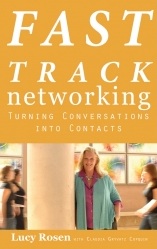
Fast Track Networking book cover
Photo: Career Press
In the same way that geese traveling south for the winter benefit from increased flying range (and a safer journey than if traveling alone) by flying in a V-formation people who have a sense of community and like to network can help each other. That is how Lucy Rosen, founder and president of Women on the Fast Track, illustrates the advantages of networking. She recommends that people find others who share common interests in order to reach their goals more quickly and efficiently.
As part of her work in public relations and marketing Rosen, founder and president of SmartMarketing Solutions Group, has twenty five years of networking experience. In Fast Track Networking: Turning Conversations into Contacts (Career Press, $14.99), a book published earlier this year, she shares some of the knowledge she has gained from networking and promises readers “a unique step-by-step approach to networking proven to put people on the fast track.”
She wrote the 224-page softcover book, with Claudia Gryvatz Copquin, a journalist, with the goal of providing readers an insider’s look into what works in networking including “networking success stories” of business owners and entrepreneurs throughout the country.
“Networking isn’t giving your business card to everyone you meet, or collecting as many business cards as you can and then calling all the people the next morning and trying to sell them your widget. Yet unfortunately, that’s still how far too many people approach the concept of networking,” said Rosen in a press release. “When done right, networking can often be the differentiating factor that helps you land the deal, or in today’s times land the job, so it’s critical that people know how to approach networking in a way that not only builds relationships, but builds business. There’s an art to turning a run-of-the-mill conversation into a life-long contact, and the building of these valuable contacts is what this book is all about.”
The book is divided into thirteen chapters: Networking is Like Dating, Only Better; Get the Party Started; No Time for Awkwardness; Small Group, Big Results; If You Create It, They Will Come; Network…Naturally; Hunters, Gatherers, Networkers; Rein In Your “Deer in the Headlights” Approach; Not Working? Try Networking; Facebook and LinkedIn and Twitter, Oh My; From Filofax to Digital Filing Cabinet; A Promise Is a Promise. Keep Yours; and Putting the Strategic in Strategic Alliances. Each chapter ends with a summary of key points.

Click here to buy Fast Track Networking
Comments:
Filed Under: Books





































